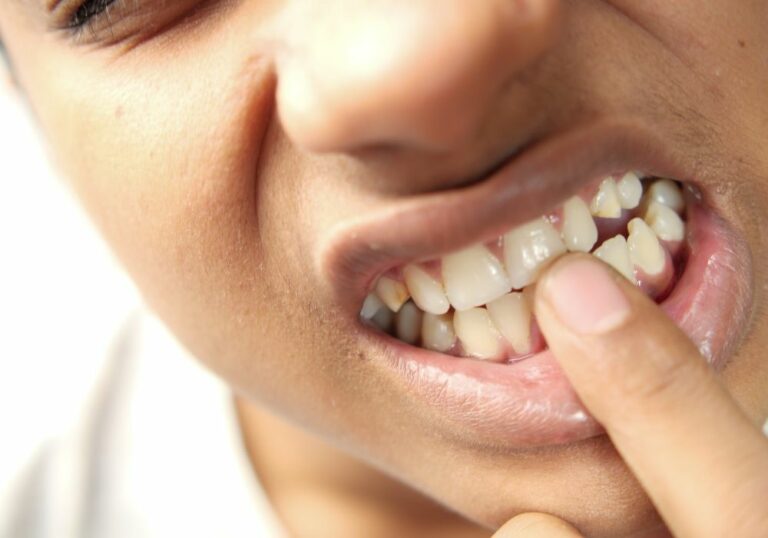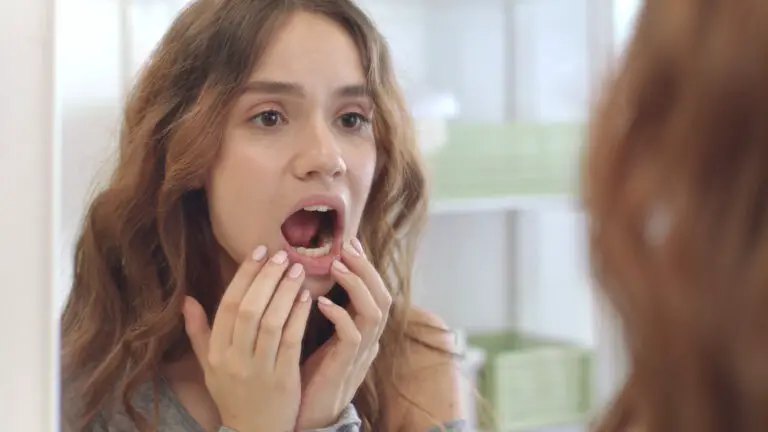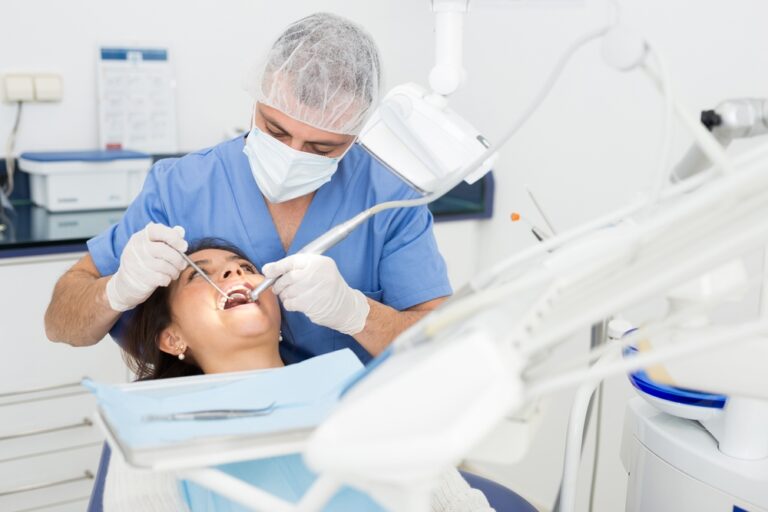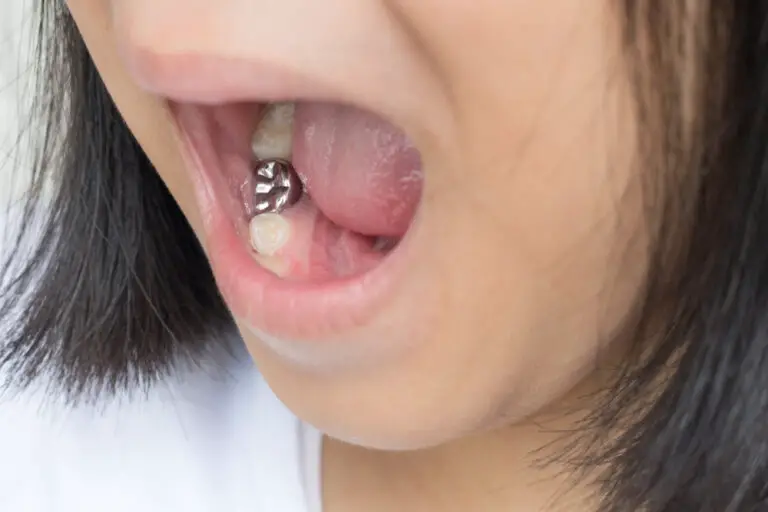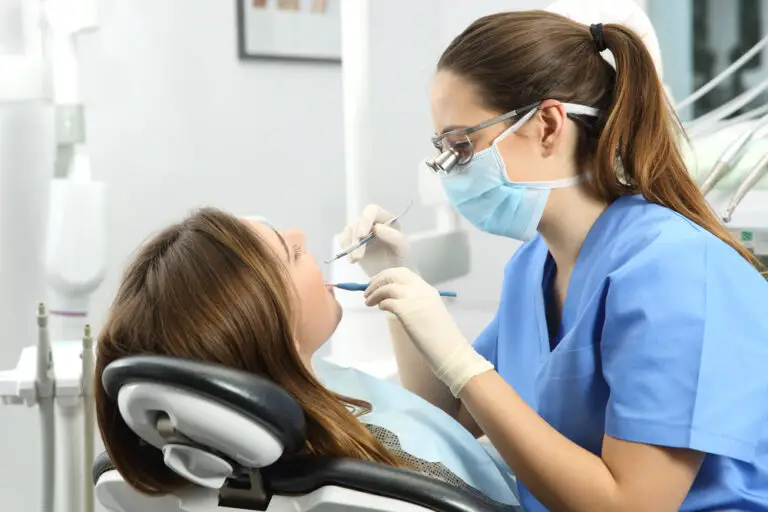Having sharp, pointed teeth may seem appealing to some people for cosmetic reasons or the illusion of functioning better at biting and tearing. However, intentionally filing down or reshaping healthy teeth is extremely ill-advised and opposed by dental professionals due to the high likelihood of complications down the road.
Why Would Someone Want Sharper Teeth?
While most people are satisfied with their natural tooth shape, there are a few reasons certain individuals seek to cosmetically sharpen their teeth:
Physical Appearance
Sharper teeth are seen as more threatening and fierce looking. This can be desirable for aesthetics, making one appear more bold, intimidating, or dangerous. Pointed shark-like teeth are sometimes viewed as more aggressive and striking.
Certain cultural fashion trends also involve sharpening teeth for self-expression. Extreme body modification subcultures may prize filed fangs or etched patterns. Sharp teeth help create an edgy, daring, or nonconformist look in some circles.
Perceived Functionality
Some people falsely believe pointed teeth will improve ability to bite and tear food. In reality, sharper teeth provide minimal increased functionality and come with great health risks.
But the notion persists that jagged, serrated teeth could allow easier biting into tough meats or other foods. This myth is likely propagated by depictions of sharp animal teeth in nature.
In rare tribal rituals, teeth were intentionally filed to sharp points thought to serve better in hand-to-hand battle. But no real martial arts advantage exists – the risks outweigh any imagined benefits.
Cultural or Social Significance
In certain societies, sharp teeth held deep ritual meaning and marked important rites of passage:
- Mayan aristocrats filed their teeth into shapes that reflected status and privilege. Mesoamerican tombs contain skulls with decorative dental modifications.
- Indonesian coming-of-age rituals involve filing down incisors to symbolize entering adulthood. The Rambu Solo ceremony in Bali transforms children into adults through teeth filing.
- Scarification and tooth sharpening were a shared experience that bonded warriors in certain African tribes. Teeth were chipped into points before battle.
So while rare in the modern West, ceremonial dental alteration retains significance in some ethnic group traditions. But participation in these rituals is fading over time.
Diagnostic Purposes
Very minor enamel shaping may occasionally assist dental diagnosis and treatment:
- Slight modification of shape can open “windows” to underlying tooth structure, allowing dentists to check for cavities, cracks, etc.
- Minimal enamel removal is sometimes needed for subtle realignment during orthodontics.
- A filed notch may help anchor a dental filling or cap.
- Etching teeth slightly better adheres bonding material for braces.
But only the minimum enamel is removed for these legitimate diagnostic and treatment purposes when deemed truly necessary.
Methods for Filing, Etching, or Reshaping Teeth
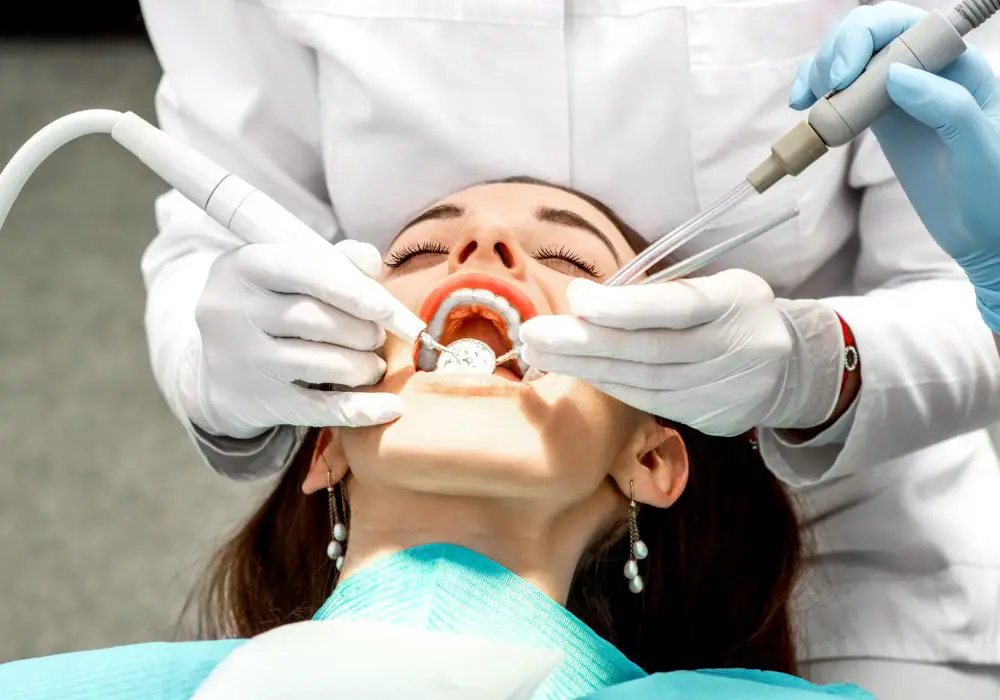
Those determined to cosmetically sharpen or etch their teeth essentially have three options of varying safety:
Home Filing
Manually filing teeth with household tools allows gradual reshaping but carries extreme risks:
- Sandpaper, emery boards, cuticle sticks, fingernail files, and metal picks can all be used to scrape away enamel over time.
- This is the cheapest method but completely unsafe without professional tools and training.
- A mistaken hand can rapidly cause deep damage to enamel and dentin layers.
- Rough, imperfect filing leaves teeth jagged. The aesthetic outcome is often unsatisfactory.
- Disinfecting household filing tools is difficult, raising infection risks.
So at-home filing experimentally can slowly change teeth shape but is crude and likely to go awry even with great care.
Cosmetic Dentistry Approach
Seeking professional cosmetic dentistry yields more predictable results:
- Dentists can carefully reshape teeth by drilling or etching outer enamel.
- Veneers and dental crowns can be custom-crafted for sharper appearance.
- Matching caps on multiple teeth can create unified shark-like points.
- Orthodontists may use devices to gradually shift teeth into more jagged orientations.
- Professionals have the best tools, skills, and materials for planned, precise structural modifications.
However, most reputable dentists still refuse to remove healthy enamel for purely cosmetic reasons, only agreeing to minor alterations within safe limits.
DIY Dental Kits
Sharpening kits sold online provide tools mimicking professional dental practices:
- Some kits include custom etching solution, applicators, and molding putty.
- Others contain miniature grinding burrs and handpieces resembling dental drills.
- A few kits provide enamel-safe abrasive strips for filing.
- But quality and safety standards vary wildly for such unregulated products.
- Outcomes tend to be underwhelming for the price. Serious injury potential remains.
So DIY dental kits promise an easier path to tooth points. But efficacy is questionable, while dangers persist without professional guidance.
Medical and Dental Risks of Tooth Sharpening
Intentionally removing outer enamel from healthy teeth carries significant dangers, according to dental research:
Permanent Damage
Enamel does not regenerate or heal once removed. The damage done to teeth from filing, etching, or drilling is irreparable and permanent.
Lost enamel cannot be restored, leaving teeth forever altered and vulnerable. Enamel is what makes teeth strong, protective, and decay-resistant.
Nerve Exposure and Pain
Enamel covers and protects the soft dentin inside teeth. Dentin surrounds the pulp containing nerves and blood vessels.
Removing too much enamel during sharpening procedures can rapidly expose sensitive dentin and pulp, causing severe pain, infection risk, and potential nerve death.
Heightened Decay and Fractures
Sharpened teeth inevitably accumulate more cavities, cracks, chips, and fractures over time.
Enamel naturally protects against decay and trauma. Eliminating its cover leaves teeth more prone to degradation and damage from consumption of foods.
Gum Damage
Pointed, sharpened teeth can cut and lacerate the gums and insides of the lips and cheeks.
This allows harmful bacteria into the bloodstream and raises odds of painful gum disease and other infections.
Aesthetic Regret
It takes skill and planning to file teeth into an attractive arrangement. Without professional help, uneven, jagged, or asymmetrical results are likely.
Some grow to regret their self-done dental modifications once the irreversible realities set in over months and years.
Tooth Loss
After excessive enamel removal, teeth may eventually weaken and fall out prematurely. It’s not unheard of for extensively filed teeth to later require extraction and replacements.
Digestive Dangers
Accidentally swallowing pieces of loose tooth, enamel fragments, or debris during filing poses choking hazards and physical internal damage.
Psychological Harm
Studies link extreme tooth replacement solely for cosmetic non-medical reasons to underlying psychological disorders and body dysmorphia in some individuals.
So while imagined benefits seem appealing up front, cosmetic tooth sharpening often leads to dental problems, health consequences, and long-term regret down the line for patients.
Official Positions from Dental Organizations
Mainstream professional dental groups unanimously oppose unnecessary cosmetic damage to healthy teeth. Some key positions:
| Dental Organization | Policy Statement |
|---|---|
| American Dental Association | “The ADA opposes any procedure that intentionally removes sound tooth structure for purely cosmetic reasons.” |
| Academy of General Dentistry | “The AGD discourages alterations to healthy teeth for purely cosmetic reasons.” |
| American Association of Orthodontists | “The AA0 does not endorse selective reproximation or dental reshaping procedures performed purely for cosmetic reasons.” |
| American Academy of Pediatric Dentistry | “The AAPD does not endorse alteration of teeth for purely aesthetic reasons.” |
These and other professional dental organizations reject any procedure aimed purely at removing healthy enamel from normal teeth to create sharper points.
They view such practices as violations of dentists’ ethical duties to avoid inflicting harm without medical necessity. Most mainstream practitioners refuse to perform major reshaping procedures solely for appearance.
However, individual dentist policies vary. Less conventional dentists may provide minor enamel etching within safer limits if patients insist despite warnings. But reputable professionals steer patients away from significant tooth sharpening.
Legality and Liability Considerations
Patient Legal Rights
Within the United States, competent adults are free to modify their own bodies with elective procedures, assuming risks themselves. There are no laws prohibiting individuals from filing, etching, or otherwise reshaping their own teeth at home if they understand the dangers.
However, dental licensing rules forbid people from performing dental procedures on others without authorization. So filing someone else’s teeth constitutes illegally practicing dentistry without a license.
Dentist Legal Obligations
Dentists cannot be compelled to perform procedures they deem unnecessary, excessively risky, or against their better judgement. Tooth sharpening for purely cosmetic reasons generally falls into this category.
However, refusing to treat legitimate dental issues in already filed teeth due to moral objections could still prompt patient complaints and lawsuits. Dentists must still provide care to patients who previously modified their teeth.
And in reality, the threat of legal action and patient demands can pressure some dentists into providing certain controversial elective procedures despite personal misgivings. Their hands are not completely tied legally.
Malpractice Liability
If a dentist does agree to perform major cosmetic reshaping procedures like veneers, enamel removal, or orthodontic alterations to create sharper teeth, they take on liability for any resulting harm. Patients can sue for malpractice or negligence if problems later occur.
But dentists bear no liability for damage resulting from procedures they refused or cautioned against. Patients who modify their own teeth against advice assume full responsibility for consequences.
So dentists must carefully document all warnings given before providing any tooth modification services. Refusing treatment requests offers liability protection.
Cultural and Social Meanings of Tooth Sharpening

The practice of artificially sharpening teeth has occurred in various human cultures for thousands of years, taking on a mix of social and sacred meanings:
Ancient and Tribal Rituals
- Ancient Mayan rituals reserved painstaking tooth shaping as a privilege of the ruling classes only. Aristocrats displayed status through pointed incisors etched in symbolic patterns.
- Various African tribes had coming-of-age rituals where young warriors filed their teeth into menacing points before battle. Sharpened teeth marked the transition into manhood.
- Traditional Indonesian ceremonies in Bali involve chipping and filing adolescent teeth to smooth away childhood and welcome adulthood. Sharpened teeth demonstrated social maturity.
Modern Subcultures
- While mostly taboo in mainstream culture, sharpened teeth hold meaning in modern primitive, punk, occult, and other youth counterculture scenes.
- Here sharp teeth become symbols of bold self-expression, defiance of convention, dangerousness, and raw primal energy.
- Ritualized dental etching creates shared group identity and bonding for those in the subcultural in-group.
Stigma and Concerns
- Despite historical ritual practices, modern Western culture often associates artificially sharp teeth with sinister or threatening aesthetics.
- Intentionally filed teeth are seen as extreme body modifications that evoke mental illness, aggression, or even moral corruption to mainstream society.
- Dentists view them as red flags indicating underlying psychological distress or disorders in patients who insist on tooth sharpening procedures.
So while sharpened teeth historically held sacred social meanings, today’s prevailing cultural attitude is often one of stigma, taboo, and psychological concern.
Conclusion
In the end, permanently removing healthy enamel to cosmetically sharpen or etch teeth often leads to dental complications like decay, fractures, sensitivity, and nerve damage over time. These risks have driven leading dental organizations to strongly oppose the practice on safety and ethical grounds. While historically important in certain cultures, ritual tooth sharpening retains these meanings only in small subcultural groups today. For individuals considering tooth points solely for edgy aesthetics, the long-term dangers clearly outweigh any perceived social benefits. Unless medically required, patients should think critically before attempting to sharpen teeth and permanently alter a naturally functional part of the body. With education on the realities involved, most opt to simply embrace their natural smile rather than pursuing artificial sharpness.
FAQ
Are there any safe ways to make my teeth look sharper?
Yes, dental overlays like removable caps or false veneers can temporarily create the look of sharper teeth for special occasions without damaging real enamel. These modifications are reversible and do not permanently sharpen actual teeth.
Can teeth be filed into extremely sharp fangs like a vampire?
No, while teeth can be filed into blunted points, elongating teeth drastically or filing them into fine sharp tips would require removing unsustainable amounts of inner tooth structure. This would lead to certain fracture, infection, and tooth loss.
I broke a tooth naturally – can this be filed into a sharp fang?
It’s possible a damaged tooth with already lost enamel could be gently filed into a smoothed-down fang shape with lower risk than cutting into healthy enamel. But infection chances would remain and most dentists would instead recommend a crown.
Would sharpening my teeth help me eat meat easier?
No, slightly pointed teeth offer no real advantage versus normal teeth in biting into and chewing meat. Natural teeth are already adapted well for a human diet. The slight perceived benefit is vastly outweighed by tooth damage risks.
If I sharpen my teeth myself, can a dentist refuse to treat them?
Dentists cannot refuse to treat damage to your modified teeth that now causes real medical issues like infections or decay. However, they may refuse to do any further cosmetic sharpening procedures since these are elective.

